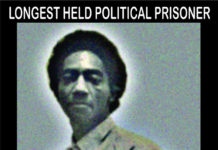by Janette D. Sherman and Joseph Mangano

In the recent article published on June 9, 2011, in the San Francisco Bay View, there were two question marks in the title: “Is the Dramatic Increase in Baby Deaths in the U. S. a Result of the Fukushima Fallout? How Can we Find Out?” In the Counter Punch article published in the weekend edition on June 10-12, 2011, again there was a question mark at the end of the title, “Is the Dramatic Increase in Baby Deaths in the US a Result of the Fukushima Fallout?” The question marks were intended to stimulate interest and prompt demand for governments – Japan and the U. S. at least – to provide definitive and timely data about the levels of radioactivity in food, air and water.
We received many responses, some in support of our concerns and some critical about how we used CDC data, including outright ad hominid attacks accusing us of scaremongering and deliberate fraud.
Given the fallibility of humankind, we may have erred, and if so, will admit it. Given the delay in collecting data and the incompleteness of the collection, the criticism may be valid. MMWR (CDC’s Morbidity and Mortality Weekly Report) death reports have certain limits – representing only 30 percent of all U.S. deaths. They list deaths by place of occurrence, while final statistics are place of residence and deaths by the week the report is filed to the local health department, rather than date of death. Finally, some cities do not submit reports for all weeks. The CDC data are available at http://www.cdc.gov/mmwr/mmwr_wk/wk_cvol.html.
Since the article was originally published, we have had the chance to further analyze the CDC data. Historically, the change in infant deaths for the previous six years in eight Pacific Northwest cities from weeks 8-11 (pre-Fukushima) to weeks 12-21 (post-Fukushima) is about 6 percent – never above 11 percent. But in 2011, the change was 35 percent, far above anything ever experienced.
The same eight cities, the same comparison – four weeks 8-11 vs. 10 weeks 12-21 infant deaths:
- 2005 +4.1 percent
- 2006 +10.0 percent
- 2007 +5.1 percent
- 2008 +5.5 percent
- 2009 +2.8 percent
- 2010 +10.9 percent
The average for 2005-2010 is + 6.1 percent for a total of 1,249 infant deaths.
- 2011 +35.1 percent (162 infant deaths)
Before 2005, there were missing data. But the years 2005 to 2010 are about 98 percent complete.

Given the detection of “hot particles” in Japan and as far away as Seattle, there is reason for concern. When ingested or inhaled, “hot particles” give intense radiation to local tissue areas. (See http://www.fairewinds.org.) We acknowledge that many factors can cause infant deaths, but the critics who ignore Japanese fallout as possible contributing factors are acting irresponsibly.
We have unassailable data that children who received x-ray and other radiation in their young lives, the unborn and children are most vulnerable to the adverse effects from radiation. (National Academy of Science, “Health Effects of Exposure to Low levels of Nuclear Radiation,” BIER VII, 2005.)
More importantly, while criticizing our use of CDC data, many commentators ignore the continuing radioactive releases from Fukushima, spreading across the Pacific Ocean. It is biologically certain that there will be negative impacts upon many life forms, from plankton to whales, and upon the unborn and youngest humans. TEPCO has admitted that the initial releases were twice as high as they claimed and that they did not reveal that three reactors had melted down. Why is this being ignored?
The question mark stimulated the thinking of some readers who expressed concern about the lack of on-going EPA and other official monitoring data documenting levels of radioactivity in our air, food and water. After EPA reported 44.5 pCi/l of I-131 in precipitation for the week covering March 22-32, 2011, the EPA has cut back to quarterly measurements. Why – at this time? EPA measurements of I-131 in precipitation were as high as 390 pCi/l in Boise, Idaho; 138pCi/l in Richmond, Calif.; and 86.8 pCi/l in Portland, Ore. (EPA data are at http://www.epa.gov/japan2011/rert/radnet_sampling_data.html#precip.)
While not strictly a West Coast city, Boise, Idaho, is approximately 430 miles from the Pacific Ocean and was included because of the high levels of fallout. “Radiation that contaminates a community need not come from nearby. The intense radiation measured in 1953 in Albany, N.Y., came from a bomb test at the Nevada Test Site, the fallout cloud passing 40,000 feet overhead, and carried to earth in a thunderstorm.” (Sherman, J.D., “Life’s Delicate Balance.” Taylor and Francis, p. 65, 2000.)

No governmental entities are currently monitoring the levels of radioactivity in milk or the changes in diseases anywhere in the U.S. Of special concern is Sr-90 that concentrates in the teeth and bones of children and the un-born and I-131 that concentrates in the thyroid gland of all humans as well as in the unborn, while Cs-137 concentrates in soft tissue and muscles.
Many who contacted us expressed concern and asked how to protect the health of their own children. If citizens do not have definitive information about levels of various isotopes, they cannot take steps to protect themselves and their children. The current news indicates that radioactive fallout continues to spread across the hemisphere, blanketing oceans, lakes, farmland and cities – everywhere that people live, breathe and eat. We call for extensive monitoring of at least Cs-137, Sr-90, I-131, plutonium, and hot particles in food, water and air, across the U. S, with the data available to the public without delay.
Shortly after the Chernobyl meltdown, there was an increase in Iodine-131 in milk in Washington, D.C. There are no dairy cows in Washington, D.C., but a major source of milk comes from the farmlands of Maryland and Pennsylvania, downwind from Three Mile Island, Peach Bottom and Limerick nuclear power plants and of course from other worldwide fallout. Mangano reported that the highest rates of thyroid cancer in the U. S. – for Blacks, whites, old and young are in eastern Pennsylvania. This information has been largely ignored. (Mangano, JJ., “Geographic Variation in US Thyroid Cancer Incidence and a Cluster Near Nuclear Reactors in New Jersey, New York, and Pennsylvania.” International Journal of Health Services 2009;39(4):643-61)
The current news indicates that radioactive fallout continues to spread across the hemisphere, blanketing oceans, lakes, farmland and cities – everywhere that people live, breathe and eat. We call for extensive monitoring of at least Cs-137, Sr-90, I-131, plutonium, and hot particles in food, water and air, across the U. S, with the data available to the public without delay.
Governments and the nuclear industry have reason to treat the public like mushrooms – keep them in the dark and feed them S#@T – and with a few exceptions, so does the corporate press. All the evidence from Japan indicates that TEPCO, the company that owns the Fukushima reactor, and the Japanese government have done just that.

If there is political wrangling over the cost of Medicare and Medicaid, just wait until the next wave of sickness becomes manifest! We either pay attention now, or we pay later – with our health and our savings.
Janette Sherman is an internist and toxicologist and contributing editor of the book, “Chernobyl: Consequences of the Catastrophe for People and the Environment.” Visit her website at www.janettesherman.com. Joseph Mangano is an epidemiologist and executive director of the Radiation and Public Health Project research group, www.radiation.org.

 Store
Store












